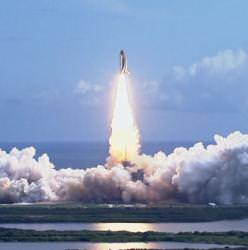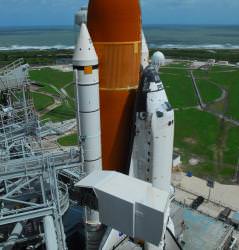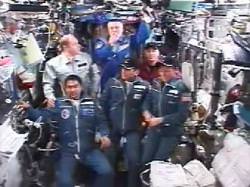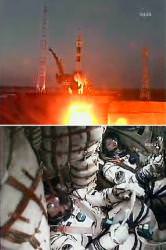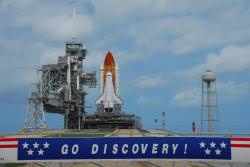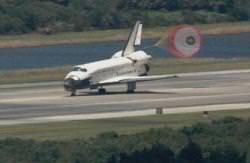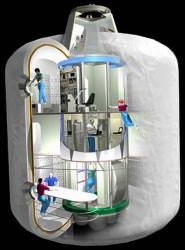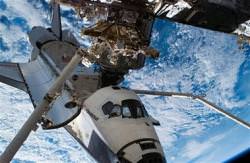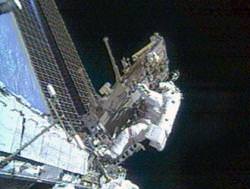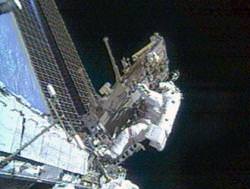NASA’s space shuttle Discovery blasted off from Florida’s Cape Canaveral today, beginning the next construction mission to the International Space Station: STS-120. This time around, the 7-astronaut crew will deliver and help install the new Italian-made Harmony module, which will serve as a sleeping area and provides connections to upcoming European and Japanese science laboratories.
Although today’s launch was on schedule – Discovery lifted off at 11:38 a.m. EDT – there were a few nagging concerns. A worrying amount of ice built up on the orange external fuel tank as it was being filled with liquid oxygen and hydrogen. Safety officials were worried that it could shed ice during the launch and hit the shuttle, but engineers eventually ruled it out as a risk.
There was also a concern about the shuttle’s heat shields. Once again, safety officials were worried that heat tiles on the shuttle’s wings were getting a little worn, and could pose a risk during re-entry. Engineers met and decided that it wouldn’t be a risk to shuttle or crew safety.
If all goes well, Discovery will spend a total of 14 days in space. The 7 astronauts on board the shuttle will meet up with the crew of the International Space Station. Over the course of the mission, they’ll perform 5 spacewalks. And installing the Harmony module is probably one of the easier tasks. The more complex task will be shuffling around the station’s P6 solar panel array.
Discovery is expected to reach the station on Thursday at 8:35 a.m. EDT.
Original Source: NASA Shuttle Site

